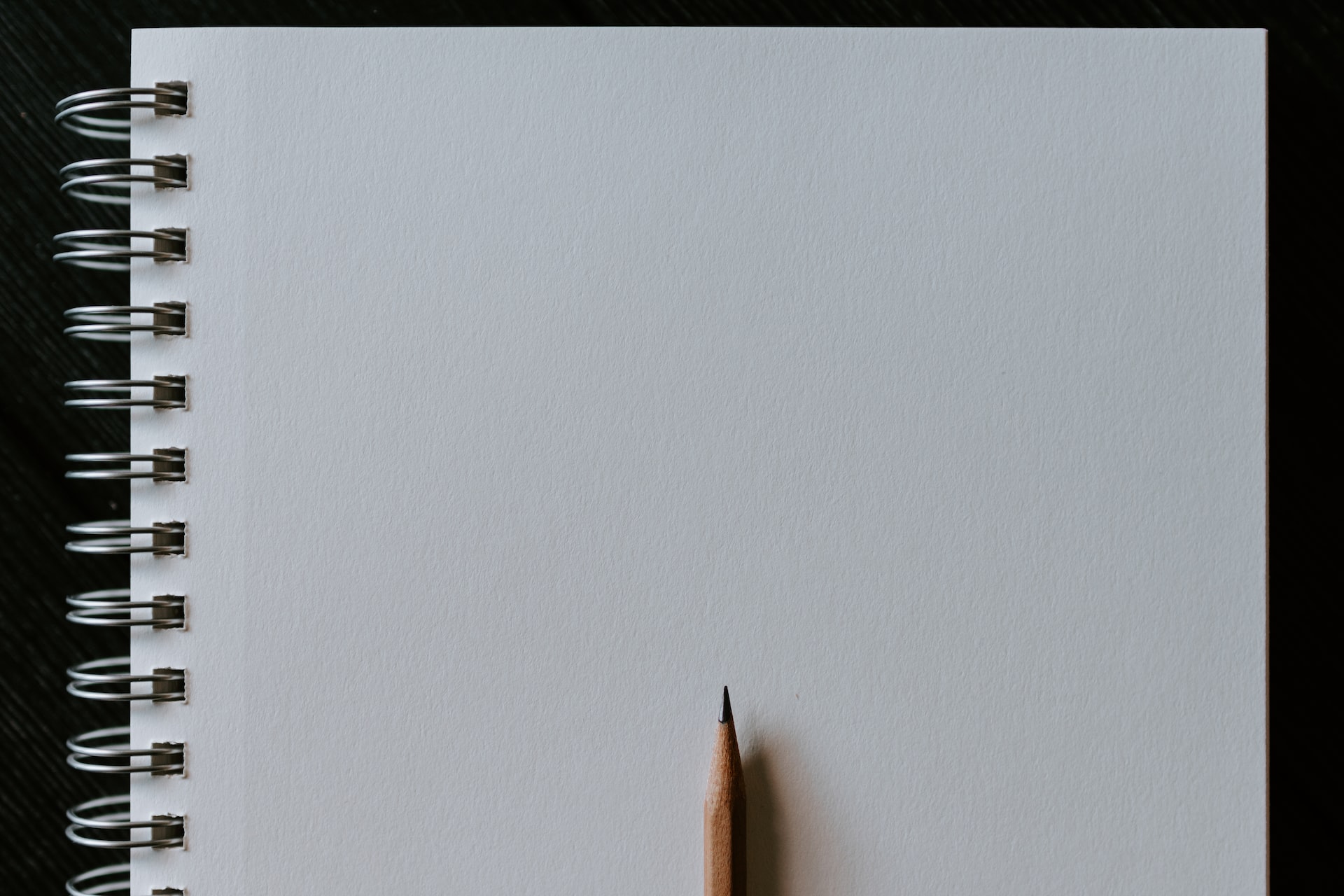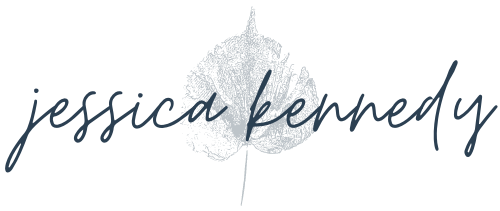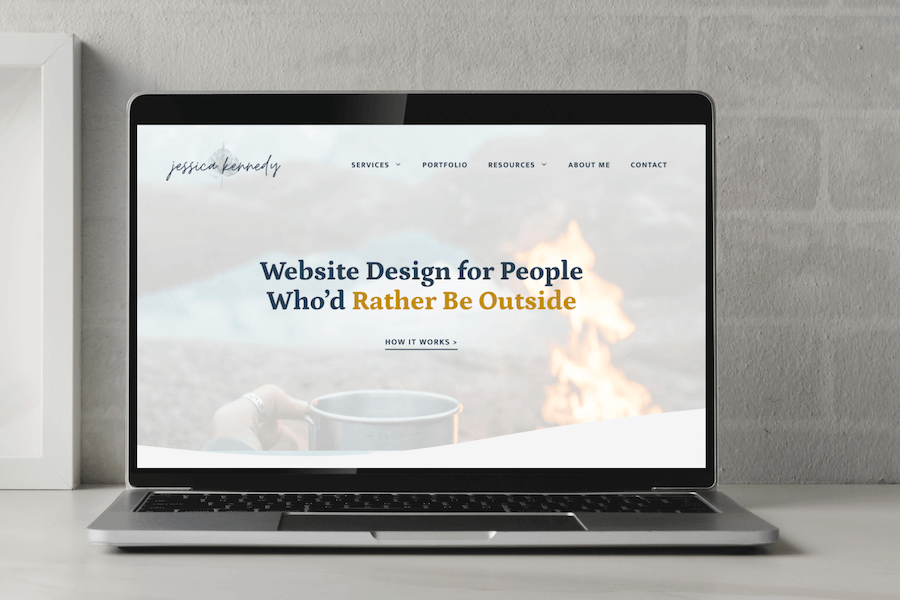I recently redesigned my website. This project fell somewhere between a refresh and a redesign, but it came with all the strife of a website redesign project that you’re not sure you’ll ever get through. It’s been a couple years since I last redesigned my website, and I’ve worked with a couple dozen clients since then, so this project came with a lot of lessons, observations, and clarity around how difficult the website redesign process can feel when you’re in it.
I got stuck often — sometimes where I expected to but also in tasks I thought I’d breeze through. My background is in copywriting, but writing about yourself is a whole different animal. There’s a reason smart, savvy people hire copywriters, website designers, business coaches and strategists, etc.
I want to hold these lessons close, and I wanted to share thoughts on what parts of the website redesign process might slow you down and what you can do to get unstuck.
Sticky section #1: getting started.
It always sounds fun to redesign my website. Getting to design exactly what I want, no back and forth and compromising? Getting to be really creative and make something that feels like me? Figuring out how to organize everything? Sign me up. But sitting down and getting to work on it was still hard.
What can you do about it?
I’m lucky to have an amazing business coach who offers Momentum Sessions. My website redesign was one of the goals we outlined together in our session. She helped me break the project into 8 weeks of tasks that could each be completed in a few hours. I scheduled a few-hour chunk on my calendar each week for the next 8 weeks, added my tasks to the appointment block, and tried my best to stick to it.
Having realistic goals (week 1: wireframe website & make URL spreadsheet / week 2: build out home page) set ahead of time was the only reason I was able to dive right in at the beginning and each new week.
#2: Really nailing down your brand.
This was my biggest sticking point, and it felt like it lasted forever. I wish I’d taken a month or two before I started my website build to work with a brand designer or just get some feedback from colleagues and friends/family. I love playing around with different brand concepts, but when you’re on a schedule you just have to pick one and run with it.
Thankfully my design-guru colleague Jeane, who runs a great website design agency in Atlanta, Bope Design, gave me some feedback and direction so I could get the site over the finish line. But the process up til that point was far more stressful than I intended.
Even if you have some brand details figured out, you might find that when applied to your website, they don’t work as well as you thought they would. You might have issues with color contrast, or you might find you need more graphic design assets than you thought — a browser favicon, section icons, background graphics, etc.
What can you do about it?
Give yourself plenty of time to figure out your branding and what you want your website to look/feel like before you begin your website redesign project. I’d recommend a month or two, and if at all possible, consider working with a brand designer with website experience to help create a brand you love.
If it has to be a solo endeavor, ask a few friends or family members for feedback on your brand. Better yet, ask a past client or someone in your industry for some insight. If all else fails, step away from the project for a few days or a week. Look at it with fresh eyes, maybe even in a new location or on a new device, so you can see what you might have missed before.
#3: Figuring out what to keep and what to get rid of.
Don’t throw the baby out with the bath water. If you were thoughtful when you initially built your website, you might have some good stuff that doesn’t need to be changed or thrown away. My colleague Jeane helped with this too — he let me know what he liked about my old site and what he thought was worth carrying over.
When you’re building a new website, it’s tempting to redo everything like you might in a home reno. Tear down the walls! All new appliances! Raise the ceilings! Put the bedroom where the living room was! But then, there goes the baby…
It helps to have a good website plan from the beginning. I didn’t include the planning part of the website redesign process here because it’s a place I didn’t (and don’t often) get stuck. I love this part of the process, and I offer Website Planning Workshops a la carte for people who are building their own websites or working with less strategy-focused designers.
What can you do about it?
Phone a friend (or a past client) to help you see what might be worth keeping. Better yet, consider getting a Website Audit to see where your strengths and weaknesses are. If you can swing working with a business coach/strategist or a strategy-focused website designer on a discovery or planning workshop, that will get you through this section much more easily too.
#4: Writing copy.

Good copywriting is a severely under-appreciated part of a website. Words matter so much! It seems easy before you start writing — you know yourself and your business better than anyone, how hard can it be? Pretty hard actually.
This is where most of my clients get stuck, sometimes for months at a time, even with templates and guides and suggestions and resources. It’s really tough to figure out what to say, to say it right, and to make the choice to put the words on the website and call it good. I moved “write copy” from my week 3 to-do list to week 4 to week 5 to week 6. I finally got it done the day before I launched.
What can you do about it?
The best case scenario: hire a website copywriter. Taking a step back from this part of the process can feel huge. If you’ve never hired a copywriter before, this article offers some good insight (aimed at web designers/agencies but applies to everyone).
If that’s not in the cards, there are dozens of website copywriting templates out there (search something like “home page copywriting template”; I even found some templates made for specific industries). If you love to write and feel good about writing your copy, make a list of what you need, then schedule time to write. I like to use the hours of the day that my brain is the most “on” and motivated to write copy. You can write directly within the website to see how the text will look, or you can use a Google Doc or other text editor.
If you get stuck, like I said above, step away! Let it leave your brain for a bit, then come back with fresh eyes to give it another go.
#5: Finding the right images.
I guess everything makes or breaks a website, because I feel it about images too. Working with great imagery makes ALL the difference. A brand photoshoot has been on my list for months now, but I needed to get my website up too quickly to delay til after I make that happen. The good news? It’s easy to swap out photos on your site later.
The photos you choose are important, but don’t let them slow down the launch of your website. Good enough is fine here, and you can add “get better photos” to your phase two list. “Good enough” means high quality photos (stock photos if need be) that feel aligned with your brand. Not quite the photo you want but almost? Use it and consider changing it later on. Constantly repeating “done is better than perfect” pushed me through this image-finding slowdown.
What can you do about it?
Ideally we’d all gather photos for a month or two before we start a website redesign project. We’d hire a brand photographer, get the exact photos we need, and plug them in to the design. We’d have all the options we could possibly want.
In reality, make a list of what photos you need for your site, schedule some time to look for photos (ideally a couple chunks of time on different days/weeks), and set aside a small budget to pay for stock photos if you find good ones on a paid site. When in doubt, ask a friend, colleague or client what they think.
It’s also helpful to just add placeholder photos if you’re stuck. If you know you need a portrait-oriented image, pop one in that’s close enough to what you’re looking for and get a feel for how it works on the site. Then you can add more specifics to your list of photos to find, buy, or have taken for your website later.
#6: Getting stuck on perfection and delaying the launch.
Who, me?! Most of my clients are tempted by this sticky trap too. We’re people who want things to be just right (especially things we’ve invested time or money in), but we can get bogged down and not see the forest for the trees. I was redesigning my website because my old website didn’t serve me — I didn’t love sharing it with potential clients. My good-enough new website was going to be far better than my old website, so getting it up ASAP was important.
What can you do about it?
Set a firm deadline to launch it. I chose the day I was heading out of the office for a week. Not recommended, but it’s what I needed to wrap it up. You should also look at your old website, reeeeally look at it, and remind yourself why you’re making a new website. This one isn’t working. The new one is much better. Time to go!
#7: The launch itself.
Ohhh the dreaded launch! Thanks to my ridiculous last-minute deadline, I didn’t have time to get stuck in the launch, but a bit of pre-planning would have helped it go more smoothly. Launches are usually pretty easy if you’re using a staging site through your host that has a push-to-live option, or if you’re moving from one Squarespace website to another Squarespace website, but changing hosts or platforms can get tricky.
You’ll need to update your domain records, which can feel scary and has a lot of potential for things to go wrong. Make sure you find instructions for your specific platform to update your A record, and make sure to bring over all relevant DNS records from your old site if you’re changing your name servers.
What can you do about it?
Set aside time to do the research to make sure you know the steps to take and what to do if there are issues. Make sure you have fresh backups of your current/old website and your new website in case things go awry. Check in with your website host’s support to make sure your process sounds correct to them, and have them on call if you need help.
Some website designers/developers/people can be hired to be on call during this process too, or they can take care of the technical launch for you. I’ve helped several clients with just the initial site structure setup and the final launch so they can avoid the really technical pieces. If you’re looking to hire someone, consider having them set up your Google Analytics and/or Google Search Console since these can be technical too.
#8: Going back in for a second phase of updates.
Once your website is launched, it’s easy to forget about the phase two updates that felt so important before you launched. I don’t know how long I’ll stay stuck in this phase, but I hope I’ll push on through!
What can you do about it?
I kept a list of next phase updates in the last few weeks of my redesign. Everything I didn’t get to in phase one went on there, and I’m going to look through them this week and sort them by priority so I can keep moving. I’m also setting a deadline for this next phase of updates for a few weeks from now.
This is also a good point in the process to consider getting a website audit. A good website audit will point out what you might have missed and let you know what your priorities should be going forward.
I also recommend getting feedback in the few weeks after you launch your site. Ask colleagues, past clients, or friends or family what they think, what they’d like to see more of, what’s missing, etc. and consider adding these things to your next phase list.
How can a website designer help?
These sticky points can hold up any project, whether you’re working with a website designer or not. A good website designer should have processes in place to help move you from one phase to the next, but even the best website designers sometimes have projects get stuck for various reasons.
If you’re willing to hire a copywriter, find images in advance (or hire a photographer!), and are really clear on your branding and what you want your website to look like, a website designer can keep things moving along much more efficiently than DIYing your website.



